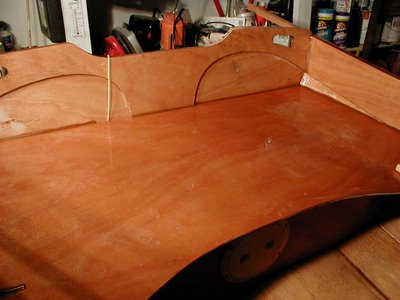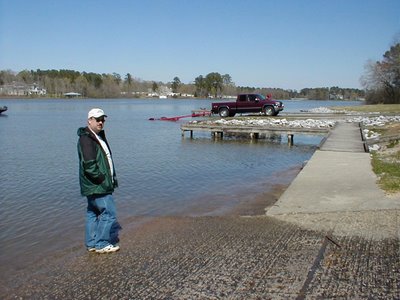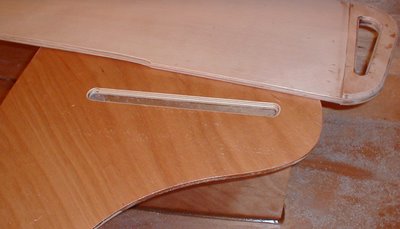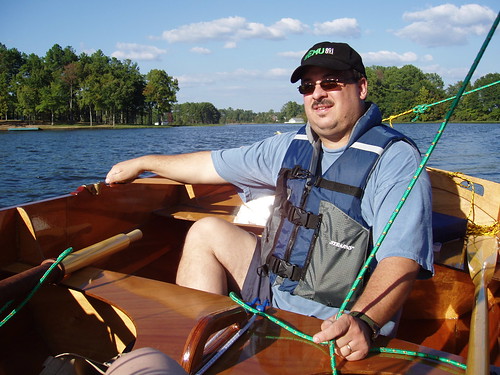Bon voyage
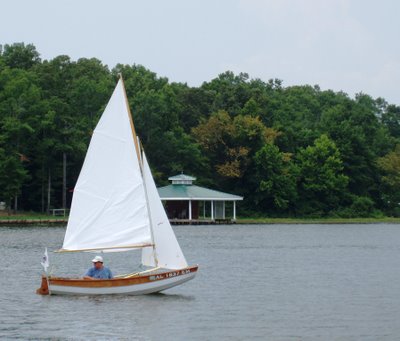 With the first official sail last weekend of Fuggles, the purpose of this blog officially comes to a close. About nine months ago, I stumbled on a web site for a small company called Chesapeake Light Craft and was instantly intrigued by the collection of small wooden boat kits they had to offer. It wasn't long before a collection of parts arrived in a shipment at my door. This blog has detailed the conversion of the oddly shaped pieces of plywood into a beautiful wooden sail boat. It has been a wonderful experience for me. Since I started out with virtually no woodworking skills, it is a pleasant surprise to end up with a product that I can be so proud of; a true testament to the Passagemaker's designers and all the people at CLC. You can view a short slide show of the building and launch of my boat here.
With the first official sail last weekend of Fuggles, the purpose of this blog officially comes to a close. About nine months ago, I stumbled on a web site for a small company called Chesapeake Light Craft and was instantly intrigued by the collection of small wooden boat kits they had to offer. It wasn't long before a collection of parts arrived in a shipment at my door. This blog has detailed the conversion of the oddly shaped pieces of plywood into a beautiful wooden sail boat. It has been a wonderful experience for me. Since I started out with virtually no woodworking skills, it is a pleasant surprise to end up with a product that I can be so proud of; a true testament to the Passagemaker's designers and all the people at CLC. You can view a short slide show of the building and launch of my boat here.Where to go from here? I had considered maintaining this blog as an online log of various cruises of Fuggles. But I think those will be better placed over in the Passagemaker dinghy forum. Why not go over and join the small but growing group of Passagemaker enthusiasts? Even in the week since my first sail, two more builders have described the completion of their building projects, and a third has just ordered his kit. With the family of Passagemaker builder/owners growing all the time, it won't be long before it becomes a sailing class, with Passagemakers competing against each other in regattas. Who knows what the future will bring for this boat design?
Finally, I'd like to thank all those who kept tabs on my building project, and offered words of advice or encouragement along the way. It was a project I entered in to with some trepidation, but am very proud to have finished. The completion of building is, of course, the beginning of sailing. I look forward to reaching the milestone of 100 hours of sailing, to equal the 100 hours of building. And then I look forward to many more sailing hours. As with most blogs, this one runs in reverse chronological order, with the most recent posts first. The journey begins here.






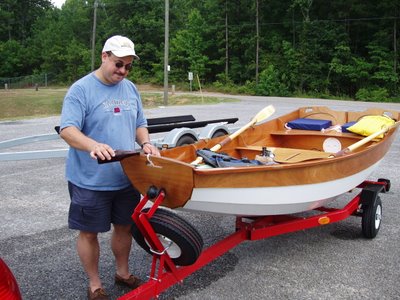

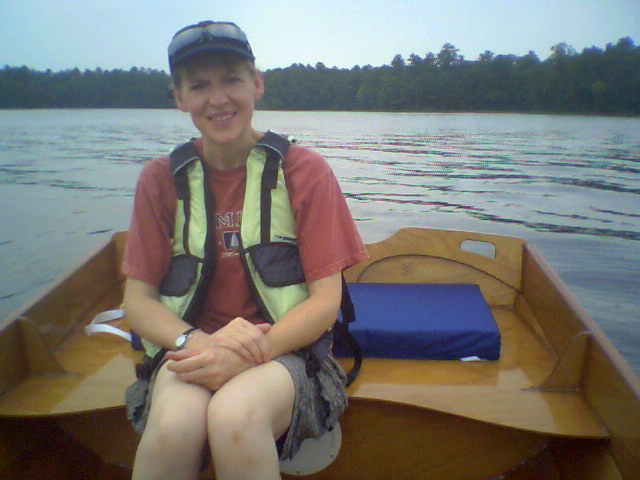









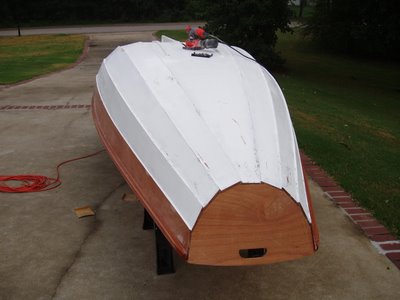



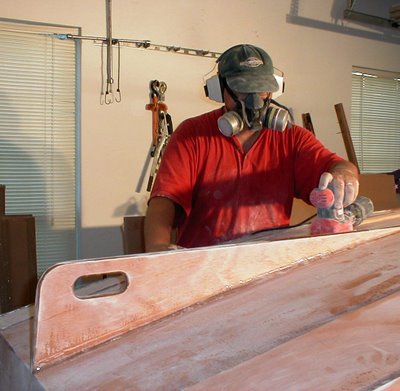


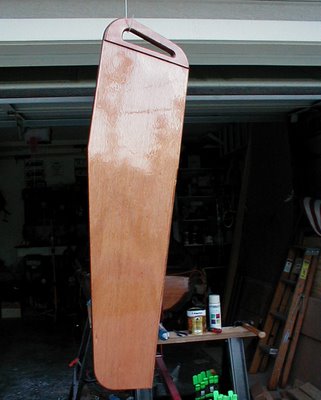
 Today was a little change from sanding. I finished some odds and ends I have been meaning to get to for a while. Although earlier I had shaped and
Today was a little change from sanding. I finished some odds and ends I have been meaning to get to for a while. Although earlier I had shaped and 
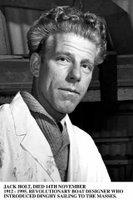




 Another batch of peanut butter epoxy, another seat. The bow seat presented its own obstacles during the installation. There was a sizable gap--about 3/4" -- between the #3 and #4 strakes and the edge of the front seat about 8" aft of the bow transom. Whether this is normal, or due to a flaw in my construction, I can't be sure. But it will require a process of building up some layers of epoxy to fill the gap. The space couldn't be spanned by one fillet of epoxy, but will instead require a second fillet be applied later over the one laid down tonight. Apart from the gap that ran for about 10" on either side of the bow seat, everything else went well. There was a very slight curve in the piece of plywood that makes the seat, so I added some weight in the form of my homebrewing propane tank to maintain a tight contact between the seat and the bow bulkhead. In all the rest of the edge, a standard fillet could be applied and smoothed. Total hours 69.75.
Another batch of peanut butter epoxy, another seat. The bow seat presented its own obstacles during the installation. There was a sizable gap--about 3/4" -- between the #3 and #4 strakes and the edge of the front seat about 8" aft of the bow transom. Whether this is normal, or due to a flaw in my construction, I can't be sure. But it will require a process of building up some layers of epoxy to fill the gap. The space couldn't be spanned by one fillet of epoxy, but will instead require a second fillet be applied later over the one laid down tonight. Apart from the gap that ran for about 10" on either side of the bow seat, everything else went well. There was a very slight curve in the piece of plywood that makes the seat, so I added some weight in the form of my homebrewing propane tank to maintain a tight contact between the seat and the bow bulkhead. In all the rest of the edge, a standard fillet could be applied and smoothed. Total hours 69.75.
